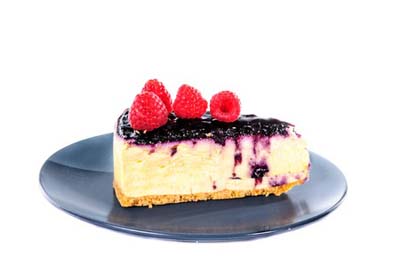Baking cheesecake is a bit like gambling for some. When you are using gluten free cheesecake recipes, it’s not much different. You never know the outcome. Most cheesecakes sink and many cracks. You may have heard ways to prevent cracking, but I will go over them for new bakers. However, there is one tip you may have never heard. It helps prevent sinking and sometimes cracking. Members have access to to almost 20 Gluten Free Cheesecake Recipes.
How to Prevent Cracks in Cheesecakes:
- Begin with Softened Cream Cheese: If you use cream cheese straight from the refrigerator, it will leave lumps. Where there are lumps, there are air pockets. An air pocket can create a huge crack in a cheesecake. If you have forgotten to leave your cream cheese out to reach room temperature, unwrap them and zap them in the microwave for about 30 seconds on high. If they are still cold in the middle, zap for 10 seconds at a time until it reaches room temperature, but not melted. If they melt, refrigerate them until firm. Times will vary depending upon the power of your microwave.
- Add gluten free flour, 2 – 4 tablespoons, (all-purpose or white rice flour) or starch (tapioca, potato, corn, or arrowroot). The more you add, the less likely the cheesecake will crack, but the less creamy the cheesecake.
- Bake slowly: Bake your cheesecake slowly, such as on 325ºF. If your recipe doesn’t call for leaving it in the oven, shave off about 15 minutes from the baking time. Baking it for about 45 minutes for a cheesecake that contains 24 ounces of cream cheese should be sufficient. Then proceed to the next step of cooling slowly.
- Cool slowly: Allow your cheesecake to cool in the oven with the door open up to 2 hours or overnight during the winter months. Then refrigerate it for further cooling.
- Bake in a hot water bath: Set your springform pan (bottom covered with foil just in case) in a large roasting pan. Fill it halfway up the sides with hot water. The steam helps prevent cracking.
How to Prevent Cheesecakes From Sinking:
- Make your batter the day before: Cheesecakes naturally shrink upon cooling. When you beat the ingredients together you are beating air into the batter, especially the eggs. When the bubbles pop, which they do even more in a batter without flour or starch, it sinks. When you make the batter the day or night before baking, some of the bubbles pop while refrigerated. Be sure to cover the bowl of batter while refrigerated.
- Generously grease the sides of your pan: This way instead of the sides being high and the middle sinking, the entire cheesecake will sink to same height.
- Add eggs last, beat on low to medium speed, and do not over-beat: Beating eggs on a high speed beats even more air into the batter. If you add the eggs last, you beat them just until everything is combined, you will not over-beat them. Over-beating also causes additional air.
- Bake at Low Temperature: Baking your cheesecake at 300 – 325ºF also prevents sinking.
Should I bake cheesecake until it’s jiggly in the center or completely set?
There is not a definite answer to this question. If you are not using a water bath and/or haven’t made the batter in advance and are baking at a temperature higher than 325ºF, then you want to stop the baking cycle when the cheesecake is a little jiggly in the center. However, this is not fully baked. However, if you continue to bake the cheesecake, most likely your cheesecake crack. It will be over-baked on the edges. If you take all of the above precautions, you should bake the cheesecake until it is just set (not jiggly at all).
Make your cheesecake the day before: Your cheesecake should cool overnight in the refrigerator.
How to Repair a Severely Cracked Cheesecake: I remember the first cheesecake I ever made. It cracked so severely that I just pushed it down to compact it while it was still in the springform pan. Then I made chocolate ganache and poured it over the top. That is how my husband and I came to enjoy my now popular Ganache Topped Gluten Free Cheesecake Recipe.




I haven’t made too many American-style cheesecakes yet. I am more familiar with the German cheesecakes made with quark. However, I will definitely keep your types in mind when making my next cream cheese, as I have experienced at least one of the issues (cream cheese lumps) mentioned by you.